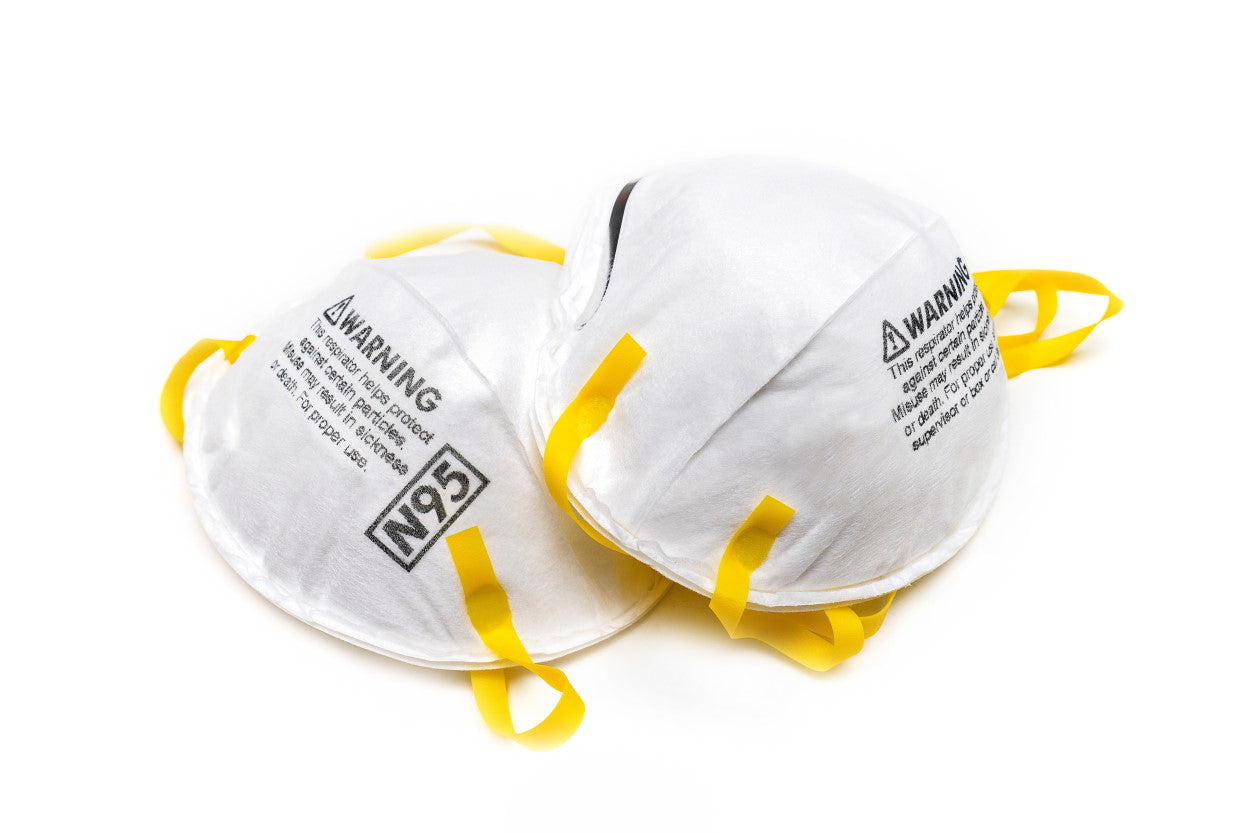The short answer is that KN95 and N95 have been shown to be roughly equivalent. KN95 is an equivalent Chinese standard to the American standard N95 or the European FFP2. KN95 masks are not approved by the U.S. National Institute for Occupational Safety and Health (NIOSH), but the FDA issued an emergency use authorization for KN95 masks during the Covid-19 pandemic in 2020. Though the emergency use authorization was later revoked and KN95 masks are not NIOSH-approved, many of us have considered N95s and KN95s as equivalent.
You can get N95 or KN95 face masks at stores like Home Depot or at online retailers like Amazon. Most of us are aware that N95 and KN95 masks are so named because they can capture or otherwise stop 95% of particles we are exposed to. That definition may not mean much to some of us, though. Let’s take a close look at N95 vs KN95 masks, what different testing standards are used to certify them, and if that should matter to any of us.
Face Mask Standards
Manufacturers often agree on common testing methods for their products so consumers can compare them on an even playing field. These agreed-upon methods are referred to as standards and vary from region to region depending on what consensus the local industry leaders came to. In the case of filtering face masks there are many different standards covering the filtration efficiency and breathability of each mask. The mask manufacturer 3M published the table below to see which masks are better from different parts of the world.

The first two columns, N95 and FFP2, are the common American and European standards that are used to label masks. KN95 is the Chinese standard, P2 is the Australian/ New Zealand standard, Korea 1st Class is the Korean standard, DS2 is the Japanese standard, and PFF2 is the Brazilian standard.
3M points out that “it is reasonable to consider China KN95, AS/NZ P2, Korea 1st Class, and Japan DS2 FFRs as “similar” to US NIOSH N95 and European FFP2 respirators, for filtering non-oil-based particles such as those resulting from wildfires, PM 2.5 air pollution, volcanic eruptions, or bioaerosols (e.g. viruses).” It is not clear what about the Brazilian PFF2 masks falls below what 3M expects.
They also note that masks are typically tested on people who live in each region. How well a mask fits against the face is very important in how well it functions, so groups with wildly different facial features may find different efficacy. This might be important because that “Total Inward Leakage” row in the table refers to leakage tests on real people. The Chinese standard requires no more than 8% leakage but the US standard does not have a fit test.
Another small difference is that the N95 is slightly more breathable than the KN95. On the inhalation and exhalation resistance rows you may notice that KN95s have a larger number, which means those masks are allowed to restrict air flow 20-30% more than N95s.
Which KN95s are CDC approved?
As of May 2021, the CDC considers most masks labeled KN95 to be equivalent to N95 masks. They recommend looking for the name of the Chinese testing method “GB 2626-2019” to verify KN95 masks meet standards. The CDC also suggests that each mask should cost around $2, any less could indicate lower quality and more is likely price-gouging.
Legitimate N95s will bear the National Institute for Occupational Safety and Health or NIOSH name and logo.
Do KN95 masks work?
Most likely, yes, KN95 masks work. Masks work to reduce the spread of diseases like covid, and KN95 masks work as well as other masks. The results of the testing on each mask is the most important thing to pay attention to, but we can still take a closer look at how Chinese and American masks are constructed. A paper published in the American Chemical Society looked very closely at the materials used in constructing these masks, how they compare, and how they might change during use.
The study found that N95 and KN95 masks have similar filtration efficiency.

Cutting open three different types of 3M N95 masks reveals three layers made of different materials- the inner, outer, and filter layers. The inner filter layer is charged with static electricity to better attract airborne particles of all types.

Cutting open KN95 masks from different manufacturers shows four layers, with an extra cotton layer.
Results may vary by region, however. In a preprinted article by a European research team, KN95 masks were found to have slightly less efficiency compared to the European FFP2, or a 90% compared to a 94% virus capture rate. Half of the different brands of KN95s examined in South Africa were found to fail the basic testing, with one brand’s particle capture rate as low as 12%.
Just to make it a little more confusing, a large study on 100 different N95 and KN95 masks found that “remarkably, some KN95 models that passed preliminary performance testing had little or no identifying markings, or had labeling that was inconsistent…thus, even what appear to be legitimate KN95 masks can be hard to identify.” These researchers were clear to note that “all U.S. or Chinese manufactured N95 and FFP2 masks tested in our study exhibited greater than 95% filtration efficiency and adhered to accepted standards for labeling.” They lay out some ideas on how to figure out if a batch of KN95s might fail testing, like checking the manufacturer’s website for legitimate datasheets and certifications.
N95 and certified KN95 masks are both considered to be effective by the CDC to reduce the risk of Covid during exposure. Neither N95 nor KN95 masks that meet their respective standards are considered to be better or worse than the other, so use what you have to protect yourself.







